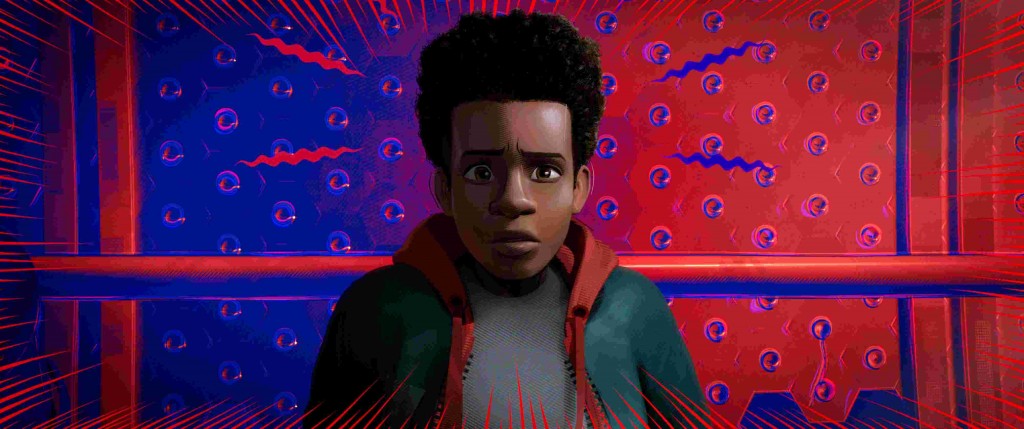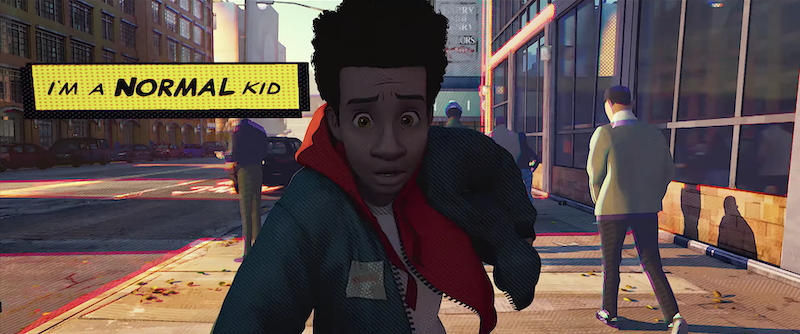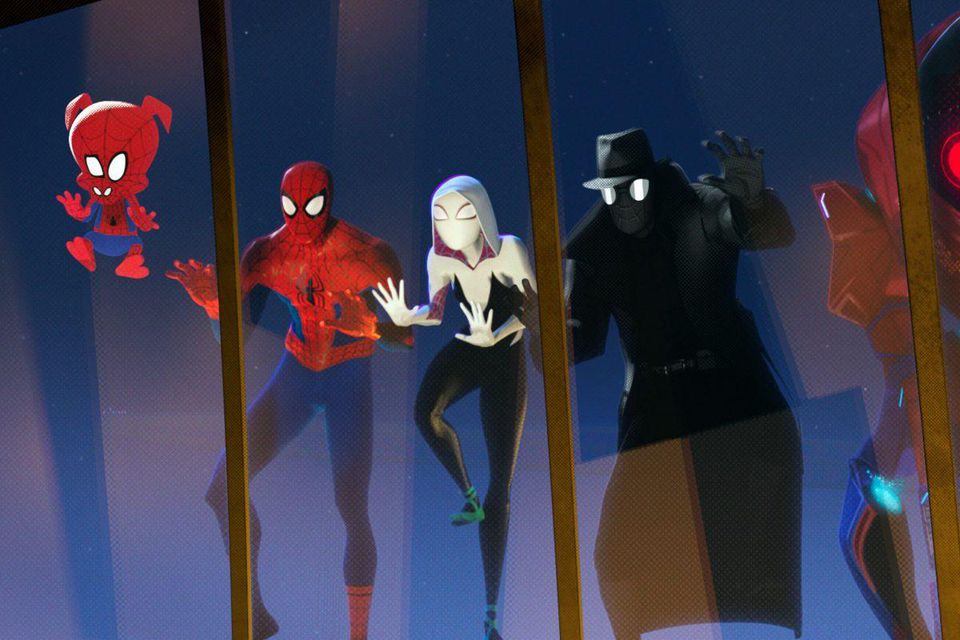
I’ve seen a lot of Spider-Man. From the three versions of the character who’ve graced the silver screen in recent years, to scores of different animated series, to an endless font of video games and shorts and other material, Marvel and its licensees have given us countless versions of The Webhead. Some kept Spidey in New York, while others sent him off into space. Some framed him as an untested kid in high school, while others made him an accomplished young adult. Some narrowed his world to a localized ecosystem of characters and conflicts, and others expanded to encompass the whole of the Marvel Universe.
But all of them starred Peter Parker as Spider-Man. And as I discussed on The Serial Fanaticist Podcast, that process of repeat adaptation can’t help but raise the question — what makes each of these characters Spider-Man as we know him? What is the connective tissue that lets each of these adaptations feel of a piece with one another and recognizable as stories about the same character? Is it just the suit, or the web-slinging, or the quips, or is there something more there?
Spider-Man: Into the Spider-Verse aims to answer that question with Miles Morales, the Afro-Latino teenager from Brooklyn (a creation from the “Ultimate” line of Marvel comics) who takes over the arachnid mantle. Miles shares some of Peter’s qualities: he’s young, he’s bright, and he’s definitely unsure of himself. But he also has his own unique characteristics: his two loving parents, the different culture he is a part of and represents, and the way he’s torn between two distinct branches of his family tree.
His disposition is familiar to anyone who’s followed the Spider-Man character over the years in both his endearing efforts to figure out his normal life and his superheroic one at the same time, and in his youthful awkwardness and apprehension. But he’s also distinct from the raft of Peter Parkers who’ve graced both the big and small screens in the last two decades. And most importantly, this is his story.

He should really at least web his shoes tied if he's going to go leaping and bounding like this. But I guess it's a choice.
Into the Spider-Verse uses its combo-breaking protagonist and its parallel universe-hopping plot to ask the broader question of what makes a Spider-Man (or -Woman or -Ham). But it is first and foremost a story about a young man who’s pulled in two different directions by the father he loves and the uncle he admires, about resolving the influences of the place that can help lift you up and the place you come from, and about figuring out not just who Spider-Man is, but who you are, when everything depends on it.
Strip away the spider-sense and supervillains. Strip away the inter-universal mashup. Strip away the flash and the fury of the comic book combat. You’ll see that, at heart, Into the Spider-Verse is a coming of age tale for arguably the most compelling young protagonist the superhero genre has offered in a long time. And while it is yet another cape flick origin story — something the film itself pokes fun at — it has the smarts to make the film much less about how a budding hero gets his superpowers, and much more about how a teenage boy decides who he wants to be.
That’s aided by the style of the film, which works in concert with the substance. The term “comic book movie” is thrown around willy-nilly to describe any superhero flick (including by yours truly), but this is the first one to truly earn the designation. The entire film exudes the bumpy texture and visual tropes of the print medium and uses them to firmly stamp the film as having emerged, fully-formed, from the comics pages.
It’s a tack that’s particularly effective when Miles gains his spider abilities, as thought bubbles and whirly onomatopoeia take over to cement the fact that something serious has shifted here. Frankly, you could halt the movie at around the half hour mark and still have a tidy and encouraging tale about Miles discovering his fitful new powers in a tense situation. It would still work as its own thing and leave you hungry for more.
But that would deprive us of the ensuing hour of superheroic fun and frenzy. Into the Spider-Verse is a joy to watch, with kinetic, color-bursting action that captures the ebb and flow of Spider-Man’s balletic grace through the skies better than any adaptation to date. The stylized approach to character design and animation gives the whole movie a distinctive flavor from the first glance to the final scene. And the way the movie blends art styles to help connote the ways in which this is a crossover between spider men and women from across the multiverse is oft-amusing and visually fantastic.
The films boasts almost as many web-heads per capita as a Spidey-themed Where’s Waldo book, but that works in the movie’s favor. Whether it’s the black and white stylings of Spider-Man Noir, the anime-influenced presence of Peni Parker, or the Looney Tunes-aping insanity of Spider-Ham, one look at the horde of Spider-people on screen immediately communicates what’s afoot.
At the same time, the film sketches out its supporting characters with complete arcs. A spider-powered Gwen Stacy has tentative but inevitable romantic chemistry with Miles. But she is a capable and vital part of the action, who slowly overcomes her reluctance to build friendships after what happened in her home universe. At the same time, an older Peter Parker from another world joins the fray to give us the “after” of the traditional Spider-Man as compared to Miles’s “before.” There’s real juice in seeing a potbellied, battle-weary, and cynical Webhead being forced to rediscover his ideals through the eyes of someone who looks up to him (or, at least, a version of him), and needs him as a mentor. And the way the film reconstructs one Spider-Man in the background while it’s building up another for the first time in the foreground, at the same time it’s subtly telling a story about an adult growing comfortable with the thought of having children, is nigh-masterful.
But in the end, apart from the eye-catching art and dimension-spanning guest stars, Into the Spider-Verse anchors itself around Miles Morales, and that’s where it’s the most engrossing. The film constantly draws a contrast between the life Miles’s policeman father wants for him, full of responsibility and upward mobility, and the rougher-edged existence his black sheep Uncle has cut out for himself, with the freedom and style that Miles envies whilst trapped in his midtown magnet school existence. It portrays Miles as inherently uncertain, before and after he has the ability to stick to walls. He is undeniably capable of great things — something his family members and reluctant mentors all agree on — but he doesn’t know what shape that’s supposed to take, or how to live up to what’s expected of him, or what he truly wants.
Then, through heart-rending but heartening trial and tragedy, he finds answers. Into the Spider-Verse signposts it a little too heavily for my tastes, but with the encouragement of his uncle, the acceptance of his father, and the lessons from his Spider-friends, Miles finds his own path. He embraces his own style, one that’s the true-to-yourself harmonization of the best that’s been passed on to him, from man and Spider-Man alike. He has his father’s inherent goodness and sense of doing what’s right, his uncle’s talent for improvisation and determination, and his own creative spark that drives him to put his signature on each move he makes. The best parts of Into the Spider-Verse don’t just come when Miles decides to become Spider-Man; they come when he fully and firmly becomes the confident, caring, self-actualized person he means to be.
With that, Into the Spider-Verse answers its animating question. In a preemptive strike against those who would claim that someone who doesn’t share Peter Parker’s name or his skin color cannot be Spider-Man, it posits that the things that made the character so indelible through fifty years of stories go beyond moniquers or melanin. Through Miles’s journey (and the presence of his alternate universe counterparts) the film declares that being Spider-Man requires facing down tragedy and knowing the pain of loss, but having it embolden you toward justice rather than driving you to madness and cruelty, as it does for the film’s villains. It means learning to trust yourself and what you’re capable of, even when that tentativeness and uncertainty hangs over you, and you have to thwip or leap your way through it.
And most of all, it means persevering, getting back up when you’re knocked down, and resolving never to quit. Time and again, Miles is pushed aside, beaten down, and ready to give up. It’s the quality that inspires the most doubt about him, in his father, in his wall-crawling allies, and in himself. But when he overcomes it, when he finds himself and learns to believe in his own potential, he refuses to stay down, and vindicates himself as deserving his new title.
That’s the central notion at the core of Spider-Man: Into the Spider-Verse, a film preceded by five decades’ worth of Spider-Man adaptations that will almost certainly be followed by five decades’ more. What unites these varying takes on the character — what makes them true and right and real despite their differences — is that indefatigable quality each of these people shares, which makes them all legitimate facets of the same hero regardless of style or setting or sobriquet. And Miles Morales gives shape to that lesson, straining and striving to become Spider-Man, and becoming himself in the process.


